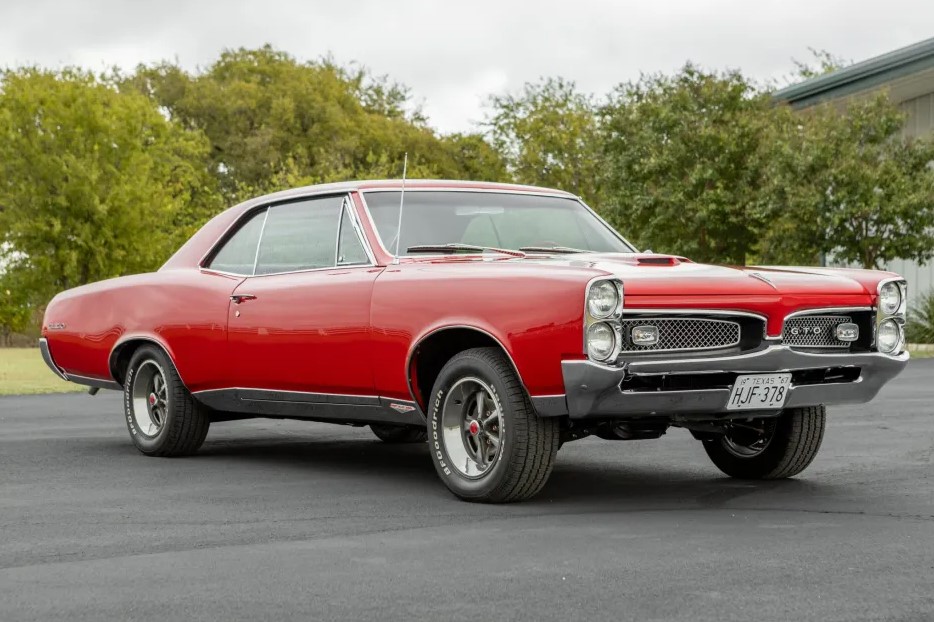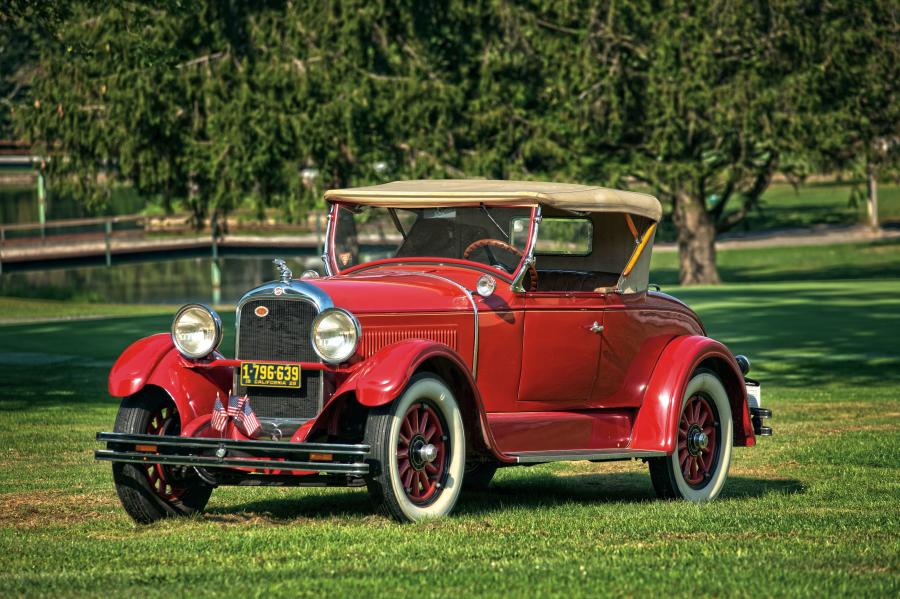Classic cars are more than just vehicles; they are time capsules, encapsulating an era's style, innovation, and spirit. Among the many iconic automobiles of the 20th century, the 1963 Pontiac Bonneville stands out as a paragon of American automotive excellence. In this 3000-word exploration, we will delve into the history, design, performance, and enduring appeal of this classic gem.

A Glimpse into the Past

The 1963 Pontiac Bonneville emerged during an era of great change and innovation in the automotive industry. As the United States entered the early 1960s, the car culture was in full swing. With the baby boomer generation coming of age and embracing the car as a symbol of personal freedom and expression, manufacturers were under increasing pressure to deliver not just transportation but also an experience.
To appreciate the 1963 Bonneville, we must first understand Pontiac's historical journey. Founded in 1926 as a subsidiary of General Motors, Pontiac had its roots in affordable, dependable, and straightforward transportation. However, it underwent a transformation in the late 1950s, thanks to the genius of John Z. DeLorean. Under DeLorean's leadership, Pontiac reinvented itself as a brand known for its powerful V8 engines and stylish designs.
The Bonneville made its debut in 1957 as the range-topping model in Pontiac's lineup. Named after the famous Bonneville Salt Flats, it signified speed and performance. Each year, the Bonneville pushed the boundaries of luxury and power, and by 1963, it was at its zenith. The 1963 Pontiac Bonneville is often regarded as the pinnacle of this lineage, representing a harmonious blend of performance, style, and innovation.
Design: Timeless Elegance

One of the most striking aspects of the 1963 Pontiac Bonneville is its design. It reflects the design trends of the early 1960s while also possessing a timeless quality that continues to captivate classic car enthusiasts.
The Bonneville's exterior is a masterpiece of 1960s automotive design. It boasts clean, uncluttered lines, crisp angles, and a tasteful use of chrome. The front grille, with its split design and Pontiac's iconic "V" logo, is instantly recognizable. The distinctive stacked headlamps lend the car an air of sophistication and uniqueness.

The 1963 Bonneville was available in several body styles, including a convertible, hardtop, and a station wagon. Each variant was designed with precision and attention to detail, offering a choice for various preferences. The convertible, with its retractable top, was particularly desirable, epitomizing the open-air freedom of the era.
Inside the Bonneville, passengers were treated to a luxurious and spacious cabin. Plush seats, high-quality materials, and a well-organized dashboard emphasized comfort and convenience. The car was equipped with power windows, air conditioning, and other modern amenities that were considered opulent for its time.
Performance: Power and Innovation

The 1963 Pontiac Bonneville was not just about aesthetics; it was a high-performance machine that exemplified American muscle cars of the era.
Under the hood of the Bonneville, one could find a variety of engine options, all of them V8s. The standard engine was a 389-cubic-inch V8, producing 303 horsepower. However, enthusiasts seeking more power could opt for the 389-cubic-inch Tri-Power V8, which cranked out a robust 330 horsepower. The ultimate power plant was the 421-cubic-inch Super Duty V8, generating a staggering 370 horsepower.

To harness the V8 power effectively, the 1963 Bonneville came with a choice of transmissions. Buyers could opt for a 3-speed manual, a 4-speed manual, or a 3-speed Hydra-Matic automatic transmission, catering to different driving preferences.
The Bonneville featured an advanced suspension system that delivered a smooth and comfortable ride, even on less-than-ideal road surfaces. The car's handling was surprisingly agile for its size, a testament to Pontiac's commitment to both performance and luxury.
Cultural Significance

The 1963 Pontiac Bonneville was not just an exceptional automobile; it was a cultural symbol that resonated with the spirit of its time.
In the early 1960s, owning a car was an integral part of the American Dream. The Bonneville represented the aspirations of a generation, offering a blend of power, luxury, and style that appealed to those who sought to achieve success and prosperity.
The 1963 Pontiac Bonneville made several notable appearances in popular culture. It was featured in television shows and movies, contributing to its iconic status. Its association with the era's glamorous and carefree lifestyle further solidified its place in the hearts of enthusiasts.
Enduring Appeal

Decades have passed since the 1963 Pontiac Bonneville rolled off the assembly line, but its appeal remains as strong as ever. There are several reasons why this classic car continues to captivate collectors and enthusiasts today.
Finding a well-preserved 1963 Pontiac Bonneville in today's world is a rare occurrence. Due to its limited production and the passage of time, these cars have become coveted collector's items. The scarcity of well-maintained examples contributes to their desirability.

The Bonneville's design remains timeless. Its clean lines, classic proportions, and tasteful use of chrome have ensured that it looks just as striking today as it did in the 1960s. The car's exterior styling and interior appointments have a classic elegance that never goes out of fashion.
The V8 engines of the 1963 Bonneville continue to impress enthusiasts with their power and performance. Restoring and maintaining these engines to their original glory is a passion for many classic car aficionados.

For some, the 1963 Bonneville represents a nostalgic connection to a bygone era. Driving or even just sitting inside this classic car can transport individuals back to the 1960s, rekindling memories of a simpler time.
Restoration and Preservation

Preserving the legacy of the 1963 Pontiac Bonneville is a labor of love for many classic car enthusiasts. Restoration efforts are often meticulous, aiming to return these vehicles to their original glory.
Locating a 1963 Pontiac Bonneville for restoration can be a challenging endeavor. Due to their rarity, it may require extensive searching and networking within the classic car community to find a suitable candidate.

The restoration process typically involves a comprehensive overhaul of the vehicle. This includes bodywork, engine rebuilds, interior restoration, and sourcing original or period-correct parts. Skilled craftsmen and restoration specialists play a crucial role in this process.
For many enthusiasts, preserving the car's originality is a top priority. This involves retaining the factory-correct components and finishes to ensure that the car is as close to its original state as possible.

Some restorations involve modern upgrades to enhance the car's safety, reliability, and performance. These can include improved braking systems, suspension enhancements, and more.
The Classic Car Community

The appeal of the 1963 Pontiac Bonneville is not limited to the car itself but extends to the vibrant community of enthusiasts who cherish these vehicles.
Classic car enthusiasts often gather at car shows and events dedicated to showcasing these timeless automobiles. The 1963 Pontiac Bonneville, with its distinctive styling and powerful engines, is a frequent head-turner at such gatherings.

Many clubs and organizations are dedicated to the preservation and celebration of classic cars, including the Bonneville. These communities provide a space for enthusiasts to share their passion, knowledge, and experiences.
In the digital age, online forums, social media groups, and enthusiast websites have become hubs for classic car enthusiasts to connect, exchange advice, and showcase their restorations and collections.
Investment Potential

The allure of classic cars extends beyond mere passion; it often carries significant investment potential. The 1963 Pontiac Bonneville, with its rarity and enduring appeal, is a case in point.
Classic cars have proven to be sound investments, often appreciating in value over time. A well-maintained and restored 1963 Pontiac Bonneville can yield a healthy return on investment, making it an attractive proposition for collectors.

Investing in classic cars can be a valuable diversification strategy for individuals with an interest in alternative assets. As an asset class, classic cars have historically shown resilience and growth, even during economic downturns.
Conclusion

The 1963 Pontiac Bonneville is more than just a classic car; it is an embodiment of an era, a symbol of American style and power. With its iconic design, powerful V8 engines, and timeless appeal, it continues to enchant classic car enthusiasts and collectors. As a rare and sought-after classic, it serves as a testament to the enduring charm of vintage automobiles. Whether it's the nostalgia it evokes or the investment potential it offers, the Bonneville is a testament to the lasting legacy of automotive excellence. As long as there are those who appreciate the beauty and power of classic cars, the 1963 Pontiac Bonneville will remain an icon in the world of classic automobiles.

